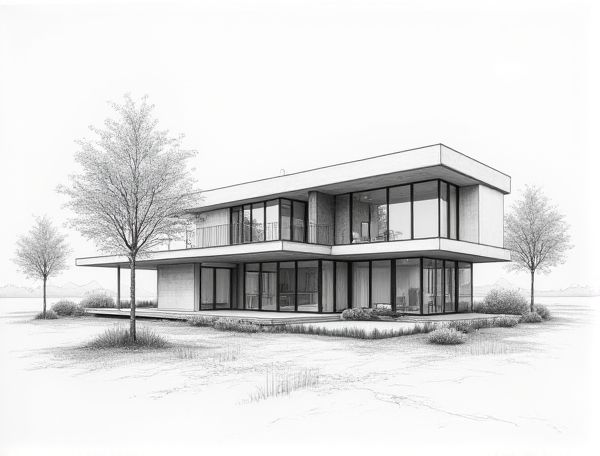
Photo illustration: Minimalist home design with universal accessibility
Minimalist home design with universal accessibility prioritizes clean lines, open spaces, and functional layouts that accommodate individuals of all abilities. Explore how integrating simplicity and inclusivity can transform Your living environment by reading more in the article.
Introduction to Minimalist Home Design
Minimalist home design emphasizes simplicity, clean lines, and functional spaces, reducing clutter to create a serene and organized environment. Your living area will benefit from neutral color palettes, natural light, and carefully selected furnishings that enhance tranquility and optimize space efficiency.
The Principles of Universal Accessibility
Universal accessibility in home design ensures environments are usable by people of all ages and abilities, incorporating features like wide doorways, step-free entrances, and accessible bathroom fixtures to enhance mobility and safety. Integrating principles such as adaptable layouts, intuitive navigation, and inclusive technology promotes independence and comfort, meeting diverse needs without requiring later modifications.
Merging Minimalism with Accessibility
Merging minimalism with accessibility in home design creates spaces that are both visually uncluttered and easy to navigate, enhancing comfort and functionality for all users. Your living environment benefits from streamlined layouts, universal design elements, and thoughtful use of materials that support independence without sacrificing aesthetic simplicity.
Essential Features of an Accessible Minimalist Home
Smooth, wide doorways and hallways ensure easy navigation for all residents, while lever-style handles and touchless faucets enhance usability and hygiene. Strategic placement of smart home systems and voice-activated controls supports independence without cluttering spaces, maintaining minimalist aesthetics. Ample natural light combined with non-slip flooring creates a safe, welcoming environment that promotes well-being and accessibility.
Open Floor Plans for Seamless Movement
Open floor plans enhance home design by eliminating walls between key areas such as the kitchen, dining, and living room, promoting seamless movement and natural light flow. This layout maximizes space efficiency and encourages social interaction, making it ideal for modern living. Incorporating multifunctional furniture and strategic zoning further optimizes the open floor concept for comfort and style.
Barrier-Free Entrances and Hallways
Barrier-free entrances and hallways enhance your home's accessibility by eliminating steps, widening doorways to at least 36 inches, and incorporating smooth, non-slip flooring materials. These design elements improve mobility for individuals using wheelchairs or walkers, ensuring a safer and more inclusive living environment.
Accessible and Minimalist Kitchen Solutions
Accessible and minimalist kitchen solutions maximize functionality by integrating ergonomic designs with sleek, clutter-free layouts tailored for easy navigation and use. Features like pull-out shelves, adjustable countertops, and streamlined storage enhance accessibility while maintaining a clean, modern aesthetic.
Adaptable Bathrooms with Simple Design
Adaptable bathrooms with simple design maximize functionality and comfort by incorporating universal design principles and minimalistic aesthetics. Features such as walk-in showers, grab bars, and adjustable fixtures ensure ease of use for all ages and abilities while maintaining a clean, clutter-free space. You can enhance your home's accessibility without sacrificing style by choosing sleek, durable materials and thoughtful layouts.
Furniture Choices for Universal Use
Selecting versatile, ergonomic furniture enhances both comfort and accessibility, accommodating diverse needs within your home environment. Prioritize pieces with adjustable heights, modular designs, and durable materials to ensure lasting functionality and adaptability for all users.
Smart Technology in Accessible Minimalist Spaces
Smart technology enhances accessible minimalist spaces by integrating voice-activated controls, automated lighting, and sensor-based systems that promote ease of use and independence. These innovations create clutter-free environments optimizing functionality and comfort while maintaining sleek, simple design principles.
 homedesy.com
homedesy.com